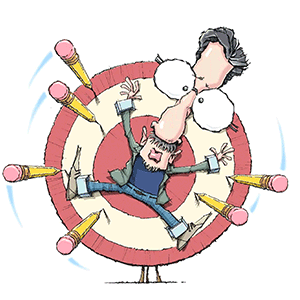My Pet World: Dog barks incessantly when the owner tries to eat something
Dear Cathy,
My dog constantly barks throughout any meal or snack that I eat. Even when I give her something to eat, she does not stop her incessant barking. It's as if I am not feeding her fast enough. When I have a dinner party, she constantly barks when we are eating. I have even put her out of the room I am in, but she still barks. Any suggestions would be appreciated.
– Vivian, Hazel Crest, Illinois
Dear Vivian,
That is a much more unusual behavior, and it’s understandable that it’s been more challenging to address. Here are a few suggestions.
First, teach your dog the “quiet” command. When she barks, say “quiet” in a calm, firm voice. Wait until she stops barking, even for a moment, then reward her with a treat. Consistency is key, so ensure all household members use the same command and reward system.
Keep some treats in your pocket and work on this command throughout the day. Gradually get her used to your eating by starting with small snacks and rewarding her for any time, even if it is just for a moment, she remains quiet. Slowly increase the duration and complexity of the meal.
Next, provide her with engaging toys or chew items during mealtime, such as puzzle toys that dispense treats or a tasty chew toy that she only gets during mealtimes, to keep her occupied. These things would also work for her when you have to place her in another room.
A Kong Wobbler, for example, is a simple push toy that dispenses treats as she pushes it around. If she is highly food-motivated, then something like this should get her attention and keep her occupied while you continue with your dinner parties. You could also feed her at the same time you are eating to help her associate mealtime with eating her own food rather than barking about your food.
Make sure she gets plenty of physical and mental exercise throughout the day, as a tired dog is less likely to bark for attention or food. Avoid giving her food from your plate when she barks, as this can reinforce the behavior. Only reward her when she is quiet.
If the behavior persists, consider consulting a professional dog trainer or a behaviorist who can provide personalized advice and training techniques based on their observations of the dog’s behavior. It may take some time and patience, but with consistent training and positive reinforcement, you can help reduce her barking during meals.
Dear Cathy,
My daughter’s seven-year-old male cat started spraying seriously a year ago. The vet said he’s healthy and 10% of male cats do it. But it’s destroying their lives, as well as the walls, floors, furniture. They use enzymatic powder to rid the stains. He’s triggered more in the summer when windows are open. They are at work and outdoor cats can be an issue. What options are there? Drugs, diapers, pheromone collars? They’ve tried changing food and litter, but it did nothing. You or your readers must have some ideas.
– Carol, Greenport, New York
Dear Carol,
It’s odd this behavior started just a year ago and that there was no health issue or change in environment related to it that could have impacted the cat. Neutering is often the first step in addressing territorial marking in cats, as it can significantly reduce or eliminate spraying behavior. I will assume the cat is neutered so we can move on to other suggestions.
To reduce territorial marking, the next step would be to limit the cat’s exposure to the outdoor cats around their home. They can close windows and blinds or use frosted film on lower windows to prevent their cat from seeing and smelling the other cats outside. If they would rather keep their windows open, then investing in motion-activated sprinklers will help keep those outdoor cats away from the home, which, hopefully, reduces their cat’s territorial marking.
Pheromone products, such as diffusers, sprays, or collars, can help with inappropriate marking. Increasing vertical space with cat trees or shelves which allow the cat to climb and feel more in control of their environment. Provide other forms of environmental enrichment through toys, puzzle feeders, and regular playtime, which keep the cat entertained and mentally stimulated.
All of this can help alleviate boredom and stress that may contribute to marking behavior. In some cases, calming supplements (available over the counter) or medications recommended by a vet may further help reduce anxiety and stress levels in their cat.
Ask them to try these things to see what combination of strategies might work for their cat.
_____
_____
========
(Cathy M. Rosenthal is a longtime animal advocate, author, columnist and pet expert who has more than 25 years in the animal welfare field. Send your pet questions, stories and tips to cathy@petpundit.com. Please include your name, city, and state. You can follow her @cathymrosenthal.)
©2024 Tribune Content Agency, LLC.
(c) 2024 DISTRIBUTED BY TRIBUNE MEDIA SERVICES, INC.












Comments